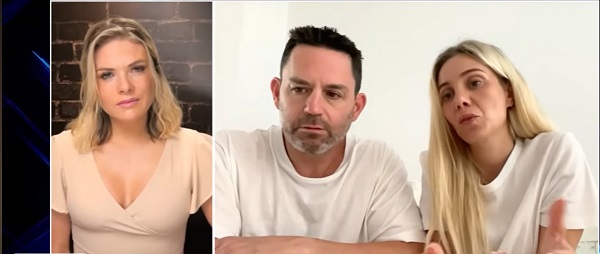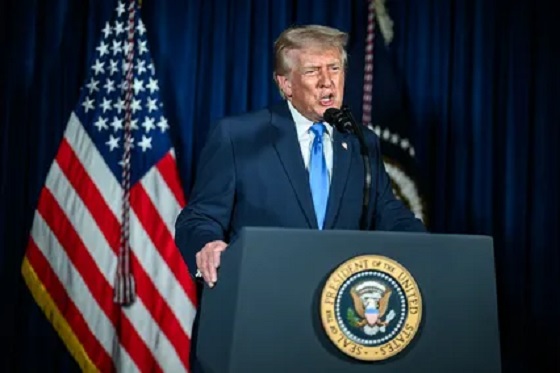Opinion
Red Deer holds the dubious title of having the poorest ambient air quality. The province has some ideas on that.

Our air quality in Red Deer has been very poor for years and I always felt that every level of government left it for the other levels of government to find a cure.
Our provincial government has taken steps since forming government in 2015. Some were expensive yet effective like reducing our dependency on coal. Some steps were eye ball rolling steps like doing more studies.
Our municipal government is taking steps and are talking about taking more steps. Let us hope that it finds the planning department and we can make the appropriate changes that I believe is necessary. For starters do we need all 5 high schools built and planned for, along 30 avenue and no high schools north of the river where 30% of the population resides? Would it mean a lot less commuting for 30% of the students if did not have to commute across the city to go to school and participate in extra-curricular activities? Just asking.
Studies are influenced by interpreters and interpretations, adding to or subtracting from parameters and by time lines. Different elements like SO2 or NOX if added or removed from comparables will affect the interpretations. In any interpretation we still have poor air. Possibly the worst air in Canada on average. Of course downtown Calgary, Toronto, or Edmonton may peak during rush hour traffic but overall we hold the title of worst ambient air quality.
So to recap. Let us go back to a story on CBC News.
Alberta is hoping to relieve Red Deer of a less than prestigious title. The central Alberta city, for years, has had the worst ambient air quality in the province. (CBC NEWS September 2015)
A report in September confirmed what many in the region already believed.
Industrial activity and vehicle emissions had pushed Red Deer’s ozone and fine particulate matter levels above national standards going back to 2009.
The province’s action plan, heavily based on its previously-announced plan to eliminate coal pollution by 2030, was introduced Thursday.
In a statement, Noah Farber of the Asthma Society of Canada said a reduction in coal pollution is a step in the right direction.
“The Alberta government’s commitment to the elimination of coal fired electricity generation is a positive step to improving air quality for all Albertans. This is particularly true for those with asthma and other respiratory diseases, who will now be able to breathe well and live healthy active lives,” Farber said.
The province is giving the Parkland Airshed Management Zone a grant of $250,000 to identify and monitor sources of pollution.
Another $560,000 will help a new air monitoring station in Red Deer provide more detailed identification of pollution sources for the region.
The Alberta Motor Association will continue driver education with an aim of reducing practices like idling, that increase emissions.
Red Deer outlined a series of actions the city was taking to address the issue following the September report, including buying 30 per cent of its energy from green sources and expanded public transit options, among others.
(CBC NEWS)
Alberta Environment Minister Shannon Phillips says the province is on track to have the worst air quality in Canada, and vows the government will put measures in place to reduce emissions from industry and vehicles.
“The time to act is long overdue,” Phillips said.
“We have a responsibility to do everything we can to protect the health of Albertans.”
Phillips made the remarks after seeing the results of the Canadian Ambient Air Quality Standards report, which show the Red Deer region has exceeded national standards. Four other regions — Lower Athabasca, Upper Athabasca, North Saskatchewan and South Saskatchewan — are close to exceeding national standards.
Phillips said there is no immediate health risk for people living in central Alberta.
“These results are concerning,” Phillips said in a news release. “We can’t keep going down the same path and expecting a different result. Our government has a responsibility to protect the health of Albertans by ensuring air pollution from all sources is addressed.”
The province will initiate an “action plan” to deal with poor air quality in the Red Deer area, a move she said is required under the Canadian Ambient Air Quality Standards.
The government said a scientific study looking into the cause of the air pollutants is currently underway, and people living in the Red Deer area, industry stakeholders and the provincial energy regulator will be consulted. That plan is expected to be complete by the end of September and will take Red Deer’s geography and air patterns into consideration.
As part of the plan, Phillips said the government will:
Review technology that could be used to reduce emissions.
Review whether polluters in Alberta are meeting national standards.
Look at other ways to reduce emissions, for example, ways to curb vehicle emissions.
The Pembina Institute, non-profit think tank focused on clean energy, was quick to follow up with its own statement about the air quality results, saying the report shows the need for a provincewide pollution reduction strategy.
“This new report adds to the mounting evidence that Alberta needs to reduce air pollution across the province. Measures that will produce more rapid results are also needed in the numerous regional hot spots identified by the report,” said Chris Severson-Baker, Alberta’s regional director at the Pembina Institute.
“The report shows that, unless emissions are cut, most of the province risks exceeding the Canadian Ambient Air Quality Standards for fine particulate matter. This places an unacceptable burden on people’s health and on the environment,” he said.
The Canadian Association of Physicians for the Environment has also weighed in on the report, saying it is “dismayed, but not surprised” by the findings.
“This calls into question the pervasive belief that the clear blue skies of Alberta foster clean air, safe from the pollutants better known from smoggier climes,” said Dr. Joe Vipond, an emergency room doctor and member of the association.
Phillips blamed the previous Tory government for contributing to the rising pollution levels, saying the PCs resisted meaningful action on climate change.
Canadian Ambient Air Quality Standards are national standards for particulate matter and ozone exposure.
I received this e-mail this past week from the Director of Air Policy for the Government of Alberta. The Premier did not toss my concerns into the wastebasket but forwarded it to someone who can actually answer some questions. Spoiler alert, there will be some eye-ball rolling.
My name is Hamid Namsechi and I am the director of Air Policy for the Government of Alberta. Premier Notley forwarded a copy of your letter regarding your concerns about air quality and the need for action to reduce air pollution in Red Deer.
The Government of Alberta takes the health of Albertans very seriously. There are many agencies both inside and outside government that look after protecting the quality of our environment. For example, while the Departments of Health and Environment and Parks are responsible for human and environmental health policies and outcomes, agencies such as Alberta Energy Regulator, Clean Air Strategic Alliance, Alberta’s ten airshed organizations, Alberta municipalities, etc. all work collaboratively to ensure the quality of air in Alberta meets all provincial and national standards.
As for action on emissions, you will be happy to know that significant progress has been made since the 2011-2013 Red Deer air quality assessment report was released in September 2015. For starters, part of taking action on reducing fine particulate matter in Red Deer is improving the state of knowledge. Until 2014, Red Deer Riverside was the only monitoring station in the Red Deer area. The Red Deer Lancaster monitoring station was added as a second air quality monitoring station in late 2014. This station will help us to understand if fine particulate matter concentrations vary in different parts of the City of Red Deer.
In April 2016, the Government announced funding for two significant studies to take place in Red Deer. One study involved air quality modelling to determine the relative impact of various sectors on the air quality in Central Alberta. The other is a long-term monitoring study which has commenced sampling and will continue to sample fine particulate matter at three locations in and around the City of Red Deer. These studies will provide valuable information regarding likely sources of emissions that are contributing to the issue of high fine particulate matter concentrations in the City of Red Deer.
Direct action has been taken to reduce emissions from the coal-fired electricity generation at the Battle River site – the biggest source of air pollution in the Red Deer region. As you are aware, coal plants produce a number of air pollutants when they burn coal to make steam to generate electricity. During combustion in air, the sulphur dioxide (SO2), various nitrogen oxides (NOx), mercury (Hg), primary particulate matter (PM) and a number of other emissions such as heavy metals are produced as by-products. The operating permit of the Battle River units has now been revised and recent records show that emissions are down by over eighty percent from pre-2015 levels.
Similarly, all industrial approvals for other facilities in the Red Deer region are currently being systematically looked at for opportunities to reduce emissions. After Minister Phillips news conference in 2015, industrial approvals staff in both Alberta Environment and Parks as well as the Alberta Energy Regulator have stepped up the stringency of the emissions standards for facilities operating in stressed airsheds.
As for reducing the volume of non-industrial emissions, there has also been a lot of progress since 2015. Alberta Government has been working with the Clean Air Strategic Alliance, federal Government, Alberta municipalities, agricultural sector, industry and environmental non-governmental organizations to develop strategies to reduce the cumulative impacts of emissions from the many small sources (such as transportation).
The good news in all of these from the ambient air quality perspective is that Red Deer’s latest fine particulate matter readings have substantially improved since the Minister’s news conference. Our preliminary assessment of the 2016 annual average for PM2.5 at Riverside Station shows a forty six percent reduction compared to the historical high levels, which puts the current air quality in Red Deer in the yellow range.
Thank you for taking the time to share your concerns with the Government of Alberta.
Sincerely,
Hamid Namsechi, P.Eng.
Air Policy Director
Policy & Planning Division
Environment and Parks
So we have seen some improvements, will it be enough? Is it just another interpretation?
Censorship Industrial Complex
Canadian university censors free speech advocate who spoke out against Indigenous ‘mass grave’ hoax

From LifeSiteNews
Dr. Frances Widdowson was arrested and given a ticket at the University of Victoria campus after trying to engage in conversation about ‘the disputed claims of unmarked graves in Kamloops.’
A Canadian academic who spoke out against claims there are mass unmarked graves of kids on former Indigenous residential schools, and who was arrested on a university campus as a result for trespassing, is fighting back with the help of a top constitutional group.
Dr. Frances Widdowson was arrested and given a ticket on December 2, 2025, at the University of Victoria (UVic) campus after trying to engage in conversation about “the disputed claims of unmarked graves in Kamloops,” noted the Justice Centre for Constitutional Freedoms (JCCF) in a recent news release.
According to the JCCF, Widdowson was trying to initiate a “good faith” conversation with people on campus, along with the leader of OneBC provincial party, Dallas Brodi.
“My arrest at the University of Victoria is an indication of an institution that is completely unmoored from its academic purpose,” said Widdowson in a statement made available to LifeSiteNews.
She added that the “institution” has been “perpetuating the falsehood” of the remains of 215 children “being confirmed at Kamloops since 2021, and is intent on censoring any correction of this claim.”
“This should be of concern for everyone who believes that universities should be places of open inquiry and critical thinking, not propaganda and indoctrination,” she added.
UVic had the day before Widdowson’s arrest warned on its website that those in favor of free speech were “not permitted to attend UVic property for the purpose of speaking publicly.”
Despite the warning, Widdowson, when she came to campus, was met with some “100 aggressive protesters assembled where she intended to speak at Petch Fountain,” noted the JCCF.
The protesters consisted of self-identified Communists, along with Antifa-aligned people and Hamas supporters.
When Widdowson was confronted by university security, along with local police, she was served with a trespass notice.
“When she declined to leave, she was arrested, detained for about two hours, and charged under British Columbia’s Trespass Act—an offence punishable by fines up to $2,000 or up to six months’ imprisonment,” said the JCCF.
According to Constitutional lawyer Glenn Blackett, UVic actions are shameful, as it “receives hundreds of millions of taxpayer dollars annually while it facilitates the arrest of Canadians attempting to engage in free inquiry on campus.”
Widdowson’s legal team, with the help of the JCCF, will be defending her ticket to protect her “Charter-protected freedoms of expression and peaceful assembly.”
Widdowson served as a tenured professor at Mount Royal University in Calgary, Alberta, before she was fired over criticism of her views on identity politics and Indigenous policy, notes the JCCF. She was vindicated, however, as an arbitrator later found her termination was wrongful.
In 2021 and 2022, the mainstream media ran with inflammatory and dubious claims that hundreds of children were buried and disregarded by Catholic priests and nuns who ran some Canadian residential schools. The reality is, after four years, there have been no mass graves discovered at residential schools.
However, as the claims went unfounded, over 120 churches, most of them Catholic and many of them on Indigenous lands that serve the local population, have been burned to the ground, vandalized, or defiled in Canada since the spring of 2021.
Last year, retired Manitoba judge Brian Giesbrecht said Canadians are being “deliberately deceived by their own government” after blasting the former Trudeau government for “actively pursuing” a policy that blames the Catholic Church for the unfounded “deaths and secret burials” of Indigenous children.
As reported by LifeSiteNews, new private members’ Bill C-254, “An Act To Amend The Criminal Code” introduced by New Democrat MP Leah Gazan, looks to give jail time to people who engage in so-called “Denialism.” The bill would look to jail those who question the media and government narrative surrounding Canada’s “Indian Residential School system” that there are mass graves despite no evidence to support this claim.
Daily Caller
Ex-FDA Commissioners Against Higher Vaccine Standards Took $6 Million From COVID Vaccine Makers


From the Daily Caller News Foundation
By Emily Kopp
The FDA old guard criticized the new leadership in a Dec. 3 New England Journal of Medicine (NEJM) letter over a higher regulatory bar for vaccines, namely the expectation that most new vaccine approvals will require randomized clinical trials, arguing it could hamper the market.
“Insisting on long, expensive outcomes studies for every updated formulation would delay the arrival of better-matched vaccines when new outbreaks emerge or when additional groups of patients could benefit,” the former commissioners wrote. “Abandoning the existing methods won’t ‘elevate vaccine science’ … It will subject vaccines to a substantially higher and more subjective approval bar.”
But while the former commissioners disclosed their conflicts of interest to the medical journal — per standard practice in scientific publishing — reporters didn’t relay them to the broader public in reports in the Washington Post, STAT News and CNN.
The headlines about a bipartisan rebuke from former occupants of FDA’s highest office give the impression that the Trump administration is contravening established science, but closer inspection reveals a revolving door between pharmaceutical corporations and the agencies overseeing them.
Three of the signatories have received payments totaling $6 million from manufacturers or former manufacturers of COVID vaccines.
Scott Gottlieb has received $2.1 million in cash and stock from his position on the Pfizer board of directors, where he has advised on ethics and regulatory compliance since 2019, according to company filings to the Securities and Exchange Commission. Stephen Ostroff has received $752,310 from Pfizer in consulting fees since 2020, according to OpenPayments.
Mark McClellan has received $3.3 million from Johnson & Johnson as a member of the board of directors since 2013, SEC filings also show. McClellan also consults for the new pharmaceutical arm of the alternative investment management company Blackstone, which invested $750 million in Moderna in April 2025.
Gottlieb and McClellan did not respond to requests for comment. Ostroff could not be reached for comment.
FDA Center for Biologics Evaluation and Research Director Vinay Prasad outlined the higher standards and shared the results of an internal analysis validating 10 reports of children’s deaths following the COVID-19 vaccine in a Nov. 28 memo to staff. He called for introspection and reform at the agency.
The NEJM letter criticizes Prasad for cracking down on a practice called “immunobridging” that infers vaccine efficacy from laboratory tests rather than assessing it through real-world reductions in disease or death. The FDA under the Biden administration expanded COVID vaccines to children using this “immunobridging” technique, extrapolating vaccine efficacy from adults to children based on antibody levels.
Norman Sharpless — who in addition to previously serving as acting FDA commissioner also served as the head of the National Institutes of Health’s National Cancer Institute — consults for Tempus, a company that collaborates with COVID vaccine maker BioNTech. He has helped steer $70 million in investments in biotech through a venture capital firm he founded in November 2024. Sharpless also disclosed $26,180 in payments in 2024 from Chugai Pharmaceutical, a Japanese pharmaceutical company that markets mRNA technology among other drugs, on OpenPayments.
“I was grateful for the opportunity to serve as NCI Director and Acting FDA Commissioner in the first Trump Administration, and strongly support many of the things President Trump is trying to do in the current Administration,” Sharpless said in an email.
Margaret Hamburg, another former FDA commissioner and signatory of the NEJM letter, has since 2020 earned $2.8 million as a member of the board of Alnylam Pharmaceuticals, which markets RNA interference (RNAi) technology.
Hamburg did not respond to a message on LinkedIn.
Most signatories disclosed income from biotech companies testing experimental cancer treatments. These products could face tighter scrutiny under Prasad, a hematologist-oncologist long wary of rubberstamping pricey oncology drugs — which Prasad points out often cause some toxicity — without plausible evidence of an improvement in quality of life or survival.
The former FDA commissioners disclosed ties to Sermonix Pharmaceuticals Inc.; OncoNano Medicine; incyclix; Nucleus Radiopharma; and N-Power, a contractor that runs oncology clinical trials.
Andrew von Eschenbach, who like Sharpless formerly served both as FDA commissioner and the head of the National Cancer Institute, disclosed stock in HistoSonics, a company with investments from Bezos Expeditions and Thiel Bio seeking FDA approval for ultrasound technology targeted at tumors.
Some FDA commissioners who signed onto the letter opposing changes to vaccine approvals have ties to biotechnology investment firms, namely McClellan, who consults Arsenal Capital; Janet Woodcock, who consults RA Capital Management; and Robert Califf, who owns stock in Population Health Partners.
Califf did not respond to an email requesting comment. Woodcock did not respond to requests for comment sent to two medical research advocacy groups with Woodcock on the board. Eschenbach did not respond to a LinkedIn message.
The two signatories without pharmaceutical ties may find their judgement challenged by the FDA investigation into COVID-19 vaccine deaths, having either implemented or formally defended the Biden administration’s headlong expansion of vaccines and boosters to healthy adults and children.
David Kessler executed Biden’s vaccination policy as chief science officer at the Department of Health and Human Services, helping to secure deals for shots with Pfizer and Moderna.
Meanwhile Jane Henney chaired a National Academies of Sciences, Engineering, and Medicine report published in October 2025 that praised the performance of FDA and Centers for Disease Control and Prevention (CDC) vaccine surveillance during the pandemic — underwritten with CDC funding.
That assessment clashes with that of a Senate report, citing internal documents from FDA, finding that CDC never updated its vaccine surveillance tool “V-Safe” to include cardiac symptoms, despite naming myocarditis as a potential adverse event by October 2020, and that top officials in the Biden administration delayed warning pediatricians and other providers about the risk of myocarditis after their approval in some children in May 2021, months after Israeli health officials first detected it in February 2021. The Senate investigation named Woodcock, a signatory of the NEJM letter, as one of the FDA officials who slow-walked the warning.
-

 Crime2 days ago
Crime2 days agoBondi Beach Survivor Says Cops Prevented Her From Fighting Back Against Terrorists
-

 Automotive2 days ago
Automotive2 days agoFord’s EV Fiasco Fallout Hits Hard
-

 Agriculture1 day ago
Agriculture1 day agoWhy is Canada paying for dairy ‘losses’ during a boom?
-

 Frontier Centre for Public Policy1 day ago
Frontier Centre for Public Policy1 day agoCanada Lets Child-Porn Offenders Off Easy While Targeting Bible Believers
-

 Business1 day ago
Business1 day agoCanada Hits the Brakes on Population
-

 International2 days ago
International2 days agoTOTAL AND COMPLETE BLOCKADE: Trump cuts off Venezuela’s oil lifeline
-

 Business1 day ago
Business1 day agoWhite House declares inflation era OVER after shock report
-

 Agriculture1 day ago
Agriculture1 day agoCanadians should thank Trump for targeting supply management






